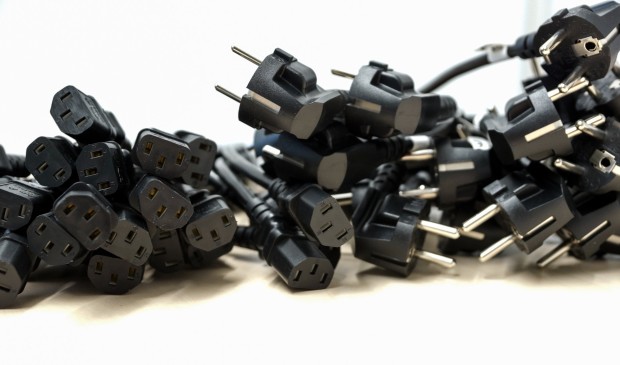Pressure mounts to change demand charge policy
Thursday, August 27, 2015 by
Tyler Whitson As City Council comes closer to adopting the budget for the upcoming fiscal year, members of the public are stepping up their requests for amendments. One such push reached a turning point last week when the Electric Utility Commission passed a resolution recommending that Council change Austin Energy’s demand charge policies for small businesses in the budget.
The proposed changes involve increasing the peak demand threshold for small commercial customers – who do not pay demand charges – from 10 to 20 kilowatts and reducing the amount of time those customers must pay demand charges after exceeding that summer ceiling from a year down to three months.
Austin Independent Business Alliance Executive Director Rebecca Melançon has argued that the change would make it less likely that a small-business owner would get bumped into a higher demand tier due to an isolated incident during the months – June through September – when Austin Energy monitors their usage. The change would also shorten the time period during which that customer would face the consequences of such an event.
Whether it is advisable to make such a policy revision – particularly as part of the Fiscal Year 2015-16 budget – remains a point of contention between those advocating for the change and Austin Energy representatives who say the city should not do so outside of the utility’s nascent cost-of-service study.
That impartial and participative process, which will help Council determine how much it costs Austin Energy to provide power to its customers so that it can set fair rates, won’t reach full swing for a few months, and the resulting rates won’t take effect until fall of next year.
Commissioner Shudde Fath, who led the push to adopt the demand charges resolution at the EUC meeting on Aug. 17, argued that small-business owners are facing financial hardships due to current policies and need relief. Any larger impact, she asserted, would be minimal.
“One reason for demand charges is to keep the customer from spiking the overall system,” Fath said. “My contention is that these small businesses are so small and they’re so diverse that I think they kind of cancel each other out.”
Fath also pointed out that the 10-kilowatt threshold wasn’t implemented until 2012, when Council restructured its rates for the first time in 18 years, following a cost-of-service study. Before that change, the threshold stood at the proposed 20 kilowatts.
Melançon wrote in a memo to Council and Austin Energy General Manager Larry Weis in July that the 2012 policy change had major impacts upon implementation. “Some businesses found themselves with surprise bills of $400-$1,000 more per month,” she asserted.
A March report by NewGen Strategies and Solutions states that 1,475 of the 7,442 customers subject to demand charges fall within the 10- to 20-kilowatt peak demand range and that fewer than 200 customers are currently subject to a 29 percent or greater increase in their demand charges due to inefficient energy use.
Austin Energy spokesperson Robert Cullick wrote in an email to the Austin Monitor on Wednesday that the purpose of the 2012 policy change was to “tailor rates more closely to the costs that differentiate categories of customers” and that changing those rates as part of a budget process would be problematic.
“Changing (the policy) will raise bills for some customers without giving them a chance to participate in a fair and impartial process. And, this community’s energy efficiency goals which we have invested so heavily in, will be set back by this one-off proposed change,” Cullick wrote.
“We want people to have low bills, not high bills,” Cullick continued. “We can help inefficient power users to lower their bills, but not if we reward them with lower rates than were justified in a bona fide process.”
Austin Energy offers services and incentives, such as the Small Business Lighting discount program, to help business owners increase their energy efficiency.
Fath argued during the EUC meeting, however, that many small-business owners face major energy efficiency challenges that they cannot easily address.
“Seventy percent of the small businesses (in Austin) occupy rented space, and they’re not able to make investments in improving their building or their insulation,” Fath said. “They can do lighting, and they can look at the load of some motors … but lighting and motors is about all they have options to do any improvements (to) in their efficiency.”
Mark Dreyfus, vice president of regulatory affairs and corporate communications at Austin Energy, responded that the city’s Energy Conservation Audit and Disclosure ordinance exists, in part, to address this problem.
Among other things, the ordinance requires owners of commercial properties that are 10,000 square feet or larger, within city limits and serviced by Austin Energy to participate in annual energy efficiency audits.
In the end, the EUC chose – in a tight 6-4 vote with one recusal – to forward the recommendation on to Council. However, it is not clear if or when Council will take up the matter.
The Council Austin Energy Utility Oversight Committee will meet this morning but is not posted to discuss the demand charges issue. Council is also scheduled to hold a public hearing on the budget later this morning.
You're a community leader
And we’re honored you look to us for serious, in-depth news. You know a strong community needs local and dedicated watchdog reporting. We’re here for you and that won’t change. Now will you take the powerful next step and support our nonprofit news organization?


